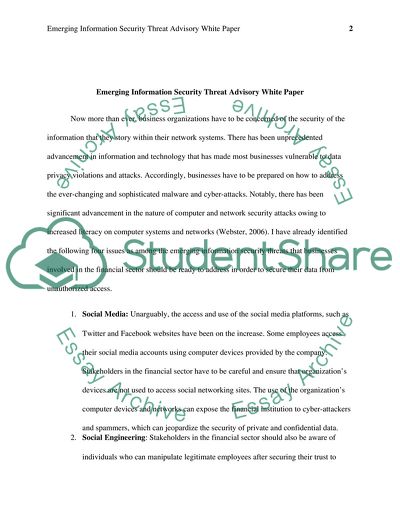Cite this document
(Emerging Information Security Threat Advisory White Paper Term, n.d.)
Emerging Information Security Threat Advisory White Paper Term. Retrieved from https://studentshare.org/information-technology/1871013-information-security-threat-advisory-white-paper
Emerging Information Security Threat Advisory White Paper Term. Retrieved from https://studentshare.org/information-technology/1871013-information-security-threat-advisory-white-paper
(Emerging Information Security Threat Advisory White Paper Term)
Emerging Information Security Threat Advisory White Paper Term. https://studentshare.org/information-technology/1871013-information-security-threat-advisory-white-paper.
Emerging Information Security Threat Advisory White Paper Term. https://studentshare.org/information-technology/1871013-information-security-threat-advisory-white-paper.
“Emerging Information Security Threat Advisory White Paper Term”, n.d. https://studentshare.org/information-technology/1871013-information-security-threat-advisory-white-paper.


